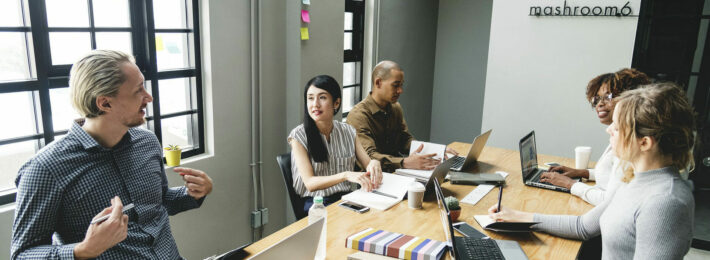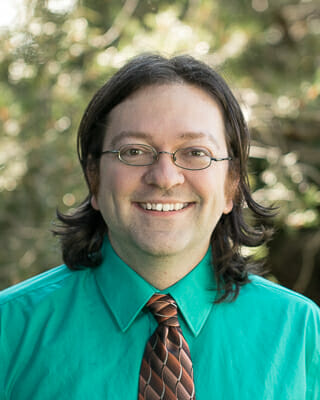
The challenges facing our students and our institutions are more complex than in the past, and no single, siloed office can address these challenges adequately. That’s why some institutions have been forming student affairs innovation hubs to bring together a more diverse crew of creative minds from across campus and put them to work on improving the student experience.
One of these institutions is Seattle University, and we recently interviewed Seattle U’s vice president for student development, Michele C. Murray, Ph.D., and Seattle U’s assistant vice president for student development, Monica Nixon, Ed.D.
Rethinking Our Work
Murray and Nixon suggest that the one-stop shop approach to serving specific student demographics (such as transfer students, for instance) has several flaws. When Seattle University set up an office to serve its transfer students, Murray notes, “the great thing was that we had one full-time staff person completely committed to those transfer students. The downside was that the transfer students felt siloed. They weren’t introduced to the fullness of the student experience, and that issue was replicated across multiple student populations.”
“Another unintended consequence of the siloed way of using one-stop shop areas to serve specific student demographics — is that the students feel that we see them in only one way. When do we stop being ‘transfer’ students and become SU students? they asked.
We were responding to a need, but there were unintended consequences.
We need to not just create new functions and new offices, but a new way of approaching our work.”
Monica Nixon, Seattle U
Nixon notes that this takes some humility. The way that most student affairs offices work, she cautions, “is working for some students, and is working extremely well for a small group of students, but there are also students we aren’t serving as well as we could be.” Seattle University’s goal is to flip this equation and effectively deliver a transformative student experience for the vast majority of students.
Having the Courage to Work Differently
Seattle University undertook a restructuring of its student affairs organization, merging offices and eliminating siloed duplication of services. For example, orientation functions were spread across four departments, each serving different populations. What had been the transfer and commuter student life office and the new student and family programs office became a single office: the Center for Orientation and Transitions. That allows the institution now to take a more comprehensive approach to orientation and transition for all students.
Murray and Nixon emphasize that we have to be willing to make tough decisions. And in order to make the right tough decisions, we need to learn to see our programs and our students’ needs with fresh eyes, and work together to identify new possibilities.
We need:
- More collaborative work to identify problems and solutions, and
- Willingness to make tough decisions based on what we learn in that collaborative work.
To achieve this, Seattle University:
- Identified five “domains” for innovation, with the coaching of Albert (Al) Blixt and Laurence (Larry) Smith of New Campus Dynamics.
- Established an innovation group or “hub” to investigate how each intervention and program on campus can help pursue these innovation demands.
- Began holding think tanks to brainstorm, across silos, better ways of addressing student needs.
1. Defining Innovation Domains
Defining domains for innovation in student affairs is a way of opening up conversation across offices about what all the work of student affairs needs to achieve, and how work can be organized to do that.
For example, Seattle University, with the coaching of New Campus Dynamics, defined 5 domains needing innovation:
- Understanding our students’ changing demographics and their needs.
- Use of integrative and adaptive technologies to the advantage of students and student development.
- Preparing students for a changing world of (a) work and (b) diversity.
- Providing a high-value student experience.
- Operationalizing students’ search for meaning and purpose.
CREATING A CHARTER
Al Blixt and Larry Smith of New Campus Dynamics suggest drafting charters, both for the innovation hub as a whole (identifying the domains for innovation) and for individual teams that will be tasked with investigating various interventions and programs on campus through the lens of these five domains. Al and Larry suggest that such a charter is best arrived at through a collaborative team workshop setting.
2. Establishing an Innovation Hub
“What the model of an innovation hub has done,” Murray comments, “is help us refocus the work we do on these five domains. We are developing new programs and reshaping existing ones to meet the needs identified in the five domains.”
For example, Seattle University’s innovation hub took a close look at the institution’s learning communities, the major system for helping students connect with other students, with mentors, and with the process of academic inquiry. Participation in learning communities at SU is highly correlated with academic performance, on-time graduation, and undergraduate student satisfaction. “We’ve used the innovation hub,” Murray explains, “to revamp the learning community, to make it our signature program.” Conversations about the learning community began with questions like:
- How are we setting up our learning communities to meet the changing demographics of students?
- How can we incorporate tech to further the goals of a learning community (is there content delivery that we can do online, and then have in-person processing and mentoring)?
- What are the needs for community-building at the learning community?
- How can we empower students to better navigate diversity and difference?
- How can we make this a high-value and signature experience?
- How can the learning community offer specific opportunities for students to identify and clarify purpose, and have a transformational experience?
“This whole process,” Murray concludes, “has been one of slowly tearing down the silos that exist in our division. And it is working. Light bulbs are turning on for staff; staff are thinking about different ways of approaching their work. That’s pretty amazing to witness.”
HOW DO YOU STAFF AN INNOVATION HUB?
Al Blixt and Larry Smith of New Campus Dynamics recommend:
- Appoint a full time executive leader and operations team to ensure the activities of the hub are carried out effectively and efficiently.
- Each innovation domain should also have its own lead and support team. Give these stakeholders clear measures and goals to align workload.
- Integrate innovation hub responsibilities into ongoing workload, not as a voluntary committee assignment.
You can also read Al and Larry’s full proposal on how to structure and staff an innovation hub.
Think Tanks
Think tanks are a huge part of making all of this work. At Seattle University, these are ninety-minute sessions that invite student affairs professionals, students, and faculty to identify how student needs are changing and brainstorm approaches to serving students better in both curricular and co-curricular activities.
Nixon describes one such session: “We brought in faculty we don’t usually get to speak in depth with, to ask what they are seeing, how they are observing students’ way of learning change over time. There was a moment in the think tank where several faculty were discussing how students need more structure now to be successful. After a pause, I added, ‘You know, I’ve seen that play out with our students, too.’ The faculty asked, ‘How?’ I gave an example. The faculty said, ‘Wow, so the students are showing up in the classroom and with you in the same way. We should work on this together.’ That commenced some conversations about how we can put in place more structure for students — across coursework, advising, student life — without setting them up badly for life after graduation.”
“In the think tank, we hear from people we don’t usually do, we learn together and brainstorm and solve problems together. We integrate the way we work.”
Monica Nixon, Seattle U
Want to Discuss Innovation in Student Affairs Further?
We would love to continue this conversation with you, as we work to gather and disseminate models for innovation in student affairs. To talk more, contact our program manager, Elizabeth Hubbell at elizabeth@academicimpressions.com.


